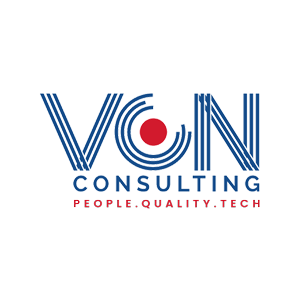Businesses nowadays are continually looking for ways to optimize their processes. Agile is around for more than two decades and helps teams deliver value to their customers fast and effectively.
Agile was founded based on values and principles.
Agile is neither a methodology nor a philosophy to get things done, but rather a collection of beliefs that teams use to make decisions. Or, said alternatively, agile is the umbrella term for many types of management methodologies. Scrum, Kanban, and Extreme Programming (XP) are each considered different agile methodologies.
Agile principles help guide teams on the right path, even when the next step is unsure or undefined.
How is this possible?
Here is a manifesto that we believe in (source: www.scrum.org)
AGILE VALUES:
Individuals and interactions over processes and tools
Working software over comprehensive documentation
Customer collaboration over contract negotiation
Responding to change over following a plan
…not saying that the items on the right have no value. Not at all.
YET,
The items on the left weight more in Agile work of software engineering teams.
Let us go more in-depth: How Does Agile Work and How Difficult Is It?
Instead of following a well-defined and strict plan, agile teams focus on continuous improvement and efficiency. They work under “sprints,” which consist of specific tasks or deliverables in a certain time frame. Each sprint typically lasts from two to four weeks – subject to the product in development.
However, sprints are not used in every single agile approach. This just proves what agile is – a set of principles and values. Before agile, software development lifecycles were used, such as Waterfall, focusing on delivering software through a linear and rigid process.
Agile eliminated the set of rules, procedures and hierarchies. It started with breaking the process into manageable actions that can be continually improved until the primary goal is reached. What mattered was to deliver the best result possible.
Since 2001, when is was first named/ founded by 17 engineers, agile has become a globally accepted mindset for managing software engineering projects – but not only.
If we were to demonstrate a high-level overview of how agile typically works, it would be like this:
Step 1: Define the project: Agile teams start by defining the overall goals and objectives of the project, as well as any constraints or assumptions.
Step 2: Break the project into smaller pieces: Next, the team breaks the project down into smaller pieces of work, called “user stories,” that can be completed in a single iteration.
Step 3: Prioritize the work: The team then prioritizes the user stories based on their importance and dependencies.
Step 4: Plan the iteration: During the planning phase, the team estimates the amount of work that can be completed in the upcoming iteration and selects the user stories that will be worked on.
Step 5: Work on the iteration: During the iteration, the team works on completing the selected user stories. They may also hold daily stand-up meetings to check in with each other and identify any obstacles that need to be addressed.
Step 6: Review and adjust: At the end of the iteration, the team reviews the work that was completed and adjusts their plans for the next iteration based on what they learned.
This entire process is repeated until the project is completed.
It is important to note that while agile has many benefits, it is not a one-size-fits-all solution. Organizations should carefully consider whether this is the right approach for their needs and for their existing teams and projects.
